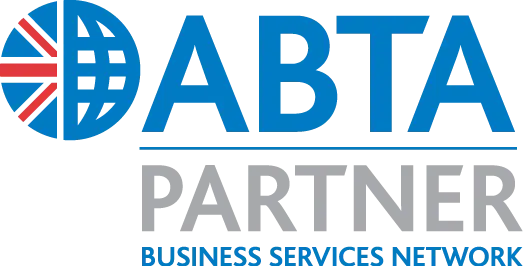
Driving in Belgium.
Honest, simple and no hidden fees.
- Free Cancellation
- Excess Protection
- 24/7 Support
- Fair Fuel Policy
Medieval marvels.
From beaches to boarding, there are all sorts of activities on offer throughout the year. That's not to mention an overwhelming selection of interesting cities to uncover so arrange a hire car in Belgium and travel around at your own pace.
Much of Belgium’s landscape may be flat, but that makes it a great destination to discover by road.
Why not read our Belgian travel guide? You may also like to view information about destinations in Belgium.
Tips for driving in Belgium
What side of the road do they drive on?
Drive on the right, overtake on the left. Vehicles coming from the right have priority in all situations except where the vehicle coming from the right is driving the wrong way in a one-way street. Trams have priority over all other users, whether on the right or on the left. In built-up areas you must slow down or stop for bus drivers who’ve indicated they intend to move away from the bus stop.
When overtaking a cyclist or moped rider there should be a distance of least 1m between you and them.
Seat belts
It is compulsory for the driver and passengers on the front and rear seats of cars to wear seat belts where fitted.
Driving with children
Children under three years old must always travel in a child restraint system suitable for their size and weight.
Children under the age of 18 and shorter than 135cm must use a child restraint system suitable for their size and weight.
Blood alcohol limits
The drink drive limit is 0.49 mg per ml. Alternatively, the maximum level of alcohol in the blood permitted is 0.049%. Belgium operates different punishments depending on how over the limit you are.
- Between 50 and 80 mg you will be banned from driving for three hours and issued an on the spot fine of €170.
- From 80 to 100 mg the fine is increased to €400.
- From 100 to 120 mg the fine is increased to €550.
- From 120 to 150 mg the fine is up to €1200.
- Above 150 mg you will be prosecuted with a fine up to €12,000 and your licence suspended for up to five years.
Parking in Belgium
Any vehicle standing must have its engine switched off, unless absolutely necessary. Parking is paid for at parking meters or automatic parking machines; methods of payment and parking conditions are specified on the machines in question. If you are in a blue zone, parking discs must not be used unless the meter or ticket machine is out of order.
On the spot fines
The Belgian Police are able to impose and collect fines on the spot for minor traffic offences. If you receive an on the spot fine the officer must issue an official receipt.
You may refuse to pay an on the spot fine but may have to pay a deposit instead. If you do not pay a deposit your vehicle will be impounded by the police and permanently confiscated if the deposit is not paid within 96 hours.
On the spot fines for exceeding the speed limit are high but can be paid in cash or by debit/credit card.
Horns and headlights
All vehicles must have their headlights or daytime running lights on at all times during the year. You should not use the horn in urban areas unless involved in a dangerous situation.
Can I use a mobile?
The use of a mobile phone while driving is prohibited, with the exception of a hands-free system.
Reflective vests, triangles and other essential equipment
A warning triangle, reflective vests, first aid kit, and fire extinguisher must be carried in all vehicles registered in Belgium.
What should I do if I breakdown?
In the event that you breakdown you must put on a reflective jacket and place a warning triangle behind your vehicle in order to warn other motorists. Call the supplier who will be able to advise you further.
What should I do if I have an accident?
Should you be involved in an accident, you must call the police on 112, as well as any other emergency services if anyone is hurt. You must not move the car unless it is unsafe to leave it in its present position. You must also call the car rental provider straight away.
Toll roads in Belgium
There are no toll roads in Belgium but you must pay to use the Llefkenshoek Tunnel.
Driving distances in Belgium
Brussels to Bruges – 100km (1hr 15mins)
Brussels to Ghent – 56km (55mins)
Brussels to Lille – 111km (1hr 30mins)
Brussels to Antwerp – 45km (55mins)
Antwerp to Bruges – 90km (1hr 20mins)
Book nowPlaces to hire in Belgium
- Antwerp
- Antwerp Airport (ANR)
- Antwerp Rail Station
- Bruges
- Brussels Airport (BRU)
- Brussels City
- Brussels Midi Train Station
- Brussels South Charleroi Airport (CRL)
- Ghent
- Gosselies
- Liege
- Liege Airport (LGG)
- Liege Rail Station
Average customer rating for car hire in Belgium
(5 out of 5.00) based on 10 responses to our customer survey.
Speed limits
- Motorways - 120 kph / 74mph
- Open roads - 90 kph / 55mph
- Built up areas - 50 kph / 31mph
Phone numbers
- Police - 112
- Fire - 112
- Ambulance - 112
Useful phrases
- Danger - Gevaar
- Diesel - Diesel
- Exit - Verlassen
- Filling station - Füllstation
- Petrol - Benzin
- Prohibited - Verboten
- Right of way - Vorfahrt
- Roadworks - Baustelle
- Slow - Verlangsamen
Fuel
Credit cards are widely accepted at petrol stations across Belgium although we would recommend that you contact your card issuer before travelling.





